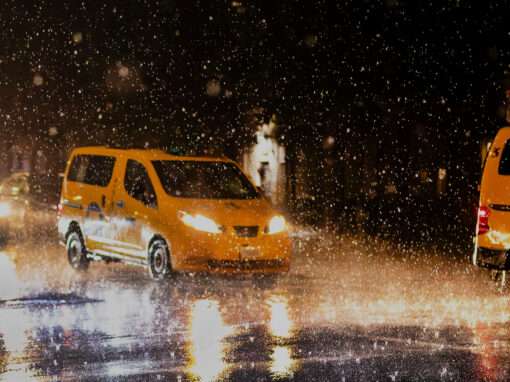A series of photos can have remarkable power. They can provoke a growing emotion. They can provoke a developing empathy. They can provoke sustained anger. They can inform, and they can articulate abstract issues with their specific physical quality.
A series of photos can reveal much more than 1/60 of a second. They can reveal an attitude, a mood, a way of thinking or being.
“Dammed: Birth to Death of the Colorado River” by Debbie Bentley
Published by Daylight Books, 2023
review by W. Scott Olsen
Oftentimes, a series of photos, especially documentary photos, are meant to engage with social, political, or environmental issues. The ethos of the individual images builds into an aggregate that can form a powerful moral argument. The evidence, as it were, becomes convincing, if not overwhelming.
Inasmuch as music is a language we all understand as listeners, though very few of us are eloquent speakers, photography is equally universal in its ability to be understood. A series, like a song, becomes a narrative, a force, an argument, an aesthetic.
I bring this up because I have on my desk today a book called Dammed: Birth to Death of the Colorado River by Debbie Bentley. This book begins at the headwaters of the Colorado River and follows it to its finish – with stops along the way. Those stops are the point.

The issues of Colorado River management are not news to most people in the United States who have any sort of environmental awareness. The river begins in the high passes of Colorado and no longer reaches the sea. Every bit of it is taken for irrigation or human consumption. Very small and very large dams divert the water. And while utility may once have been a philosophical merit and goal, we’ve learned that dams are also deep-core problems.
Knowing this issue, however, is not the same thing as seeing meadows, streambeds, and concrete, the evidence of huge and then diminished flow.

Over time, most images of the Colorado River have been beautiful. Even those images of where the river fails to meet the sea tend to have that particular effect of landscape photography, which provokes admiration and a hoped-for, if not real, connection.
But Dammed is not looking for spirituality. In fact, I don’t know of another visual project that has taken on the subject of dams or provided a kind of argument this way.

Dammed is, as you might guess, a collection of images of the dams on the Colorado River. Yes, there are beautiful pictures of the river flowing. But this book is an anthology of what stops the river. In that way, it is a subtle and growing argument. It’s a book you begin and think: how pretty. In the middle, you think: how sad. In the end, you think something must be done.

The book’s epigraph sets out the problem with a quote by John Wesley Powel when he was addressing the Second International Irrigation Congress in 1893.
“When all the rivers are used, when all the creeks in the ravines, when all the brooks, when all the springs are used when all the canyon waters are taken up, when all the artesian waters are taken up, when all the wells are sunk or dug that can be dug in all this arid region, there is still no sufficient water to irrigate all this arid region…
Gentlemen, it may be unpleasant to me to give you these facts… I tell you, gentlemen, you are piling up a heritage of conflict and litigation over water rights, for there is not sufficient water to supply these lands.”

Impressive for both its brevity and its scope, the Introduction is a wonderful bit of education. It is neither over simplified or over romanticized. The introduction explains the relationship between what is called the upper basin and the lower basin, about flow rates measured in million acre-feet (maf), about the Colorado River Compact of 1922. It brings up indigenous rights, climate change, and in only two pages delivers the necessary education to begin to understand the politics and science of water management.

“When John Wesley Powell undertook his first Colorado River Expedition in 1869, he encountered a river that today would be unrecognizable, now dammed and diverted with a complex and interrelated system. The Colorado River provides water for 40 million people in irrigates 5.5 million agricultural acres in the Colorado River Basin and Mexico. Once flowing to the Gulf of Mexico and feeding a robust Delta. The rivers flow now dries and disappears into the desert sands far short of the Gulf.”

Dammed has a simple organization. Start at the beginning. Go to the end. Stop at the dams. Yes, the book says the river is beautiful. Let’s pay attention to the problem.
With latitude and longitude, the book begins at the headwaters at La Poudre Pass, elevation 10,184 feet above sea level, in Colorado. The images here, summertime images of marshland giving way to a stream, lead to Grand Ditch. Every dam in Dammed has a preceding page of text, and here at the first one we learn,
“The grand ditch is a more than century old diversion project located at the northwestern corner of Rocky Mountain National Park, Colorado. Begun in 1896, this hand-dug canal didn’t reach its full 15-mile length until the 1930s. The Grand Ditch diverts an average of 29% of the runoff from the Never Summer Mountains, which would otherwise feed the headwaters of the Colorado River. Water levels in associated peatlands drop by as much as twenty inches when snowmelt is diverted.”

Dammed is not an overwrought argument. It is not histrionic, nor is it angry. It is simply an explanation of what is there. A couple of beautiful pictures farther on, we get to Shadow Mountain Dam. Again, another page of descriptive prose. Yet, realizing how quickly there are two dams, how quickly the water is going someplace else, and seeing the dams, the water impounded behind them, and the water released, a small argument begins to form.
The book then goes to Granby Dam, Windy Gap, Chimney Hollow Dam, and so on all the way down the river. Glen Canyon Dam. Hoover Dam. Morelos Diversion Dam.

Damned is not a beautiful book of landscape photography, although it contains beautiful landscape photography. The images in this book are not sentimental. They are not artsy. They are color documentary bits of evidence. The occasional fold-out spreads provide either a historical or a broader contemporary context. There are a handful of historical images to provide a counterpoint to what exists today, too.
Combined with the text, you begin to watch the rising and falling river levels, you begin to see the shapes and textures of dams, and the old phrase of the whole being more than the sum of the parts becomes both a way to praise the book and indict the dams.
To that purpose, photography has a special power.


A note from FRAMES: Please let us know if you have an upcoming or recently published photography book.




